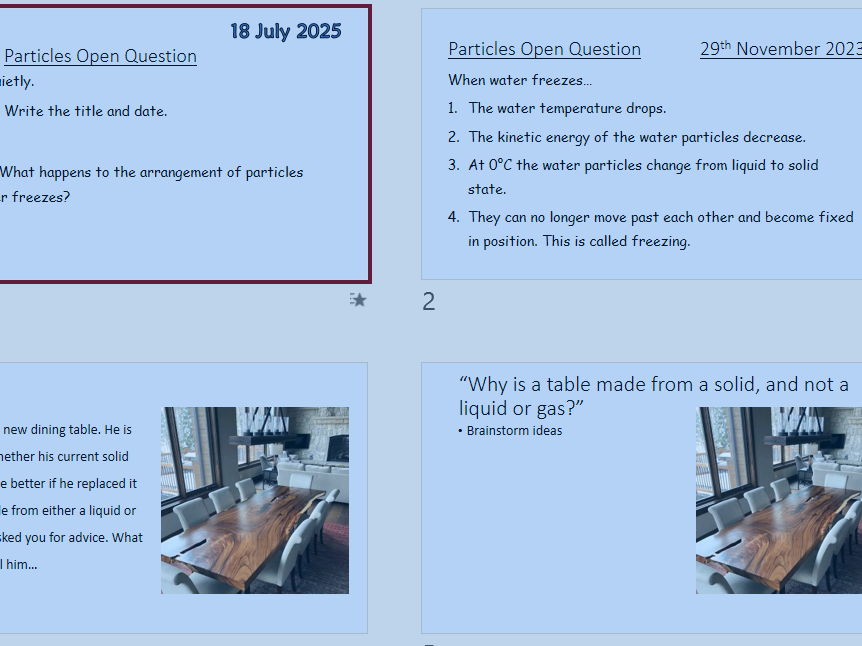



States of Matter: Why Are Tables Made from Solids? – KS3 Science
Engaging Lesson - Particle Model - Real-Life Application - New Activate Aligned
This fully resourced and interactive lesson explores states of matter through a relatable question: “Why is a table made from a solid and not a liquid or gas?”
Perfectly aligned with the New Activate KS3 Science Curriculum, this lesson brings particle theory to life through structured tasks, visual learning, and real-world context.
Learning Objectives:
Identify and describe the particle arrangement in solids, liquids, and gases
Understand the key properties of each state: shape, volume, and compressibility
Explain why solids are suitable for making objects like tables
Compare and contrast the usefulness of each state for structural purposes
Link particle attraction strength to state behaviour
Resource Features:
Fully editable PowerPoint lesson
Visual particle diagrams for annotation
Scaffolded questions and activities
Links scientific theory to real-world understanding
No printing required – ideal for digital display or remote delivery
Ideal For:
KS3 students (Years 7–9)
Teaching the Particle Model and States of Matter
Activate 2024 or general KS3 Chemistry lessons
Mixed-ability or SEND-friendly classrooms
Something went wrong, please try again later.
This resource hasn't been reviewed yet
To ensure quality for our reviews, only customers who have purchased this resource can review it
to let us know if it violates our terms and conditions.
Our customer service team will review your report and will be in touch.